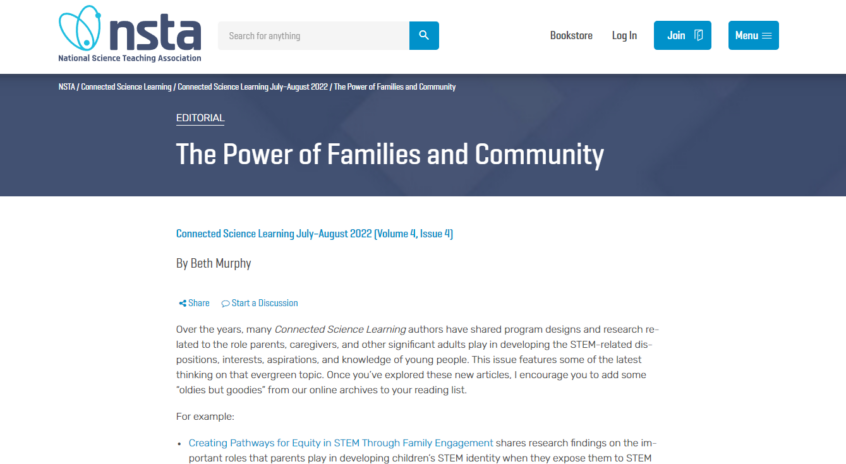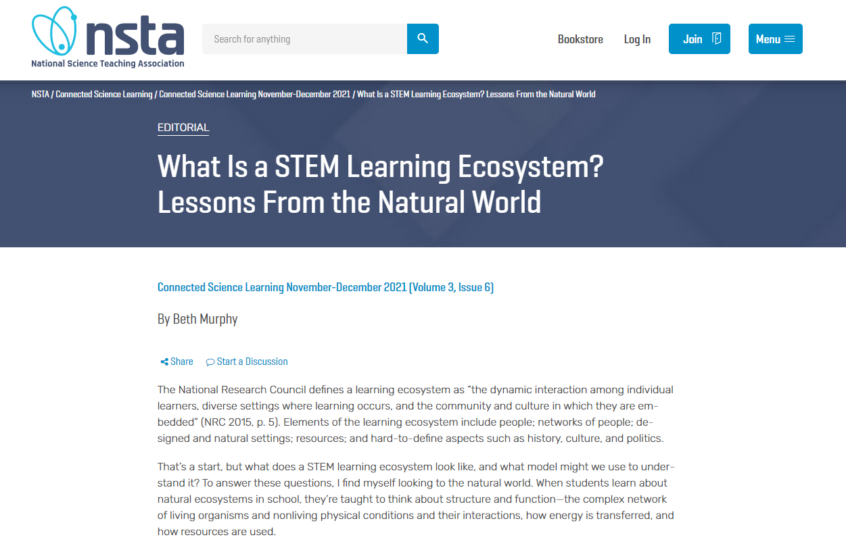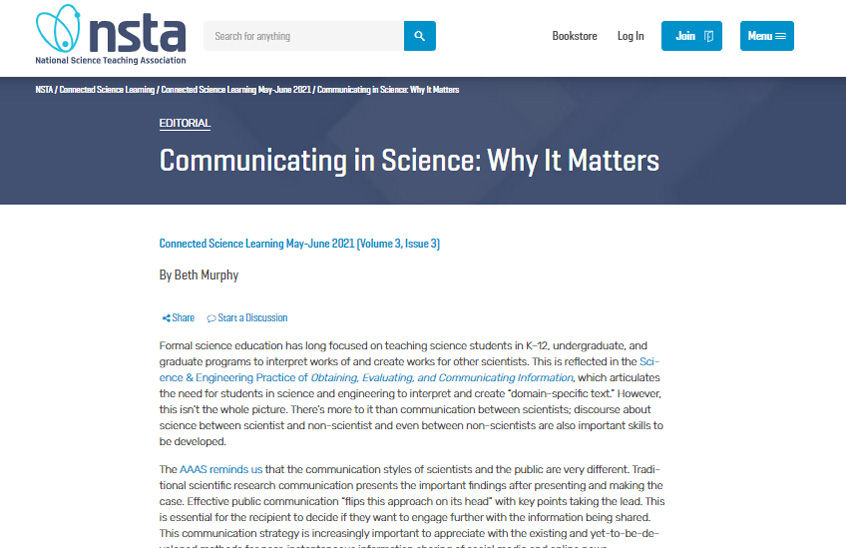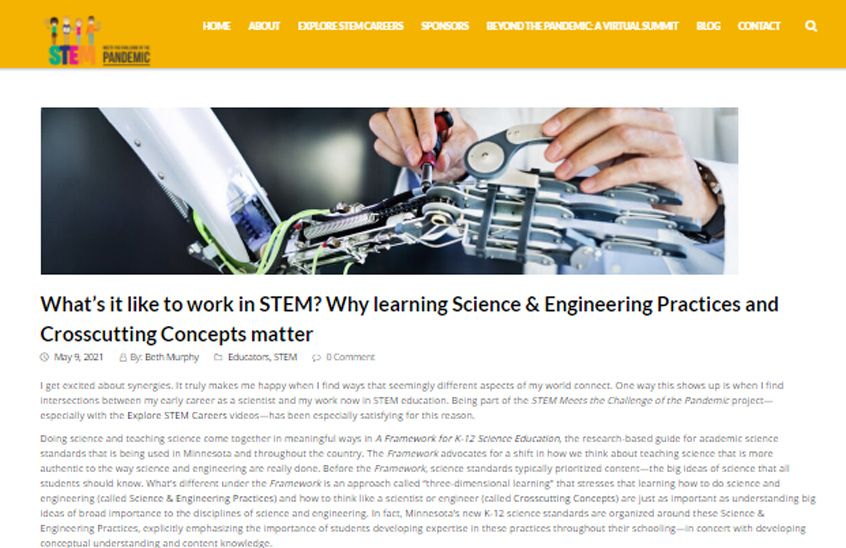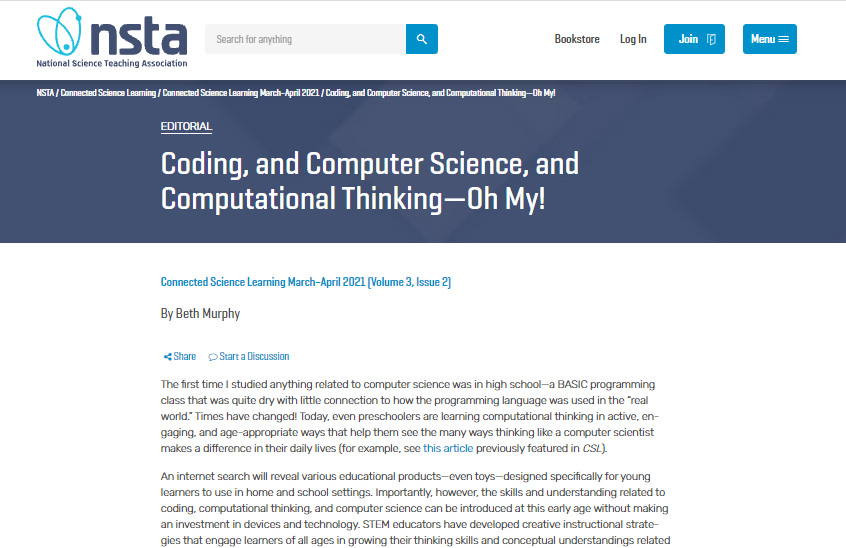I’m writing this editorial from the Boundary Waters Canoe Area (BWCA) in Minnesota, where I am a two-day paddle from civilization. Out here, where there’s no shortage of pine tree–studded islands and rocky outcroppings, a map and the direction of the sun alone only gets you so far. Knowing how to use a compass is an essential skill, one that
The Power of Families and Community
Over the years, many Connected Science Learning authors have shared program designs and research related to the role parents, caregivers, and other significant adults play in developing the STEM-related dispositions, interests, aspirations, and knowledge of young people. This issue features some of the latest thinking on that evergreen topic. Once you’ve explored these new articles, I encourage you to add
With, Not For: Why the Distinction Matters
A couple of years ago, I had the opportunity to write an article for the Association of Science and Technology Center’s Dimensions magazine. It starts with this reflection: For most of my career in science and STEM education, I’ve worked at the interface between museums or other educational institutions and schools, finding synergies in their efforts to improve science learning
Is It Over Yet?
The short answer is “no.” It might feel like we’ve been frozen in time for the past two years; the reality is, however, that the world is different now than it would have been if the pandemic had never occurred. We’ve had to adapt to previously unimaginable circumstances, leading to innovations that otherwise might never have happened—certainly not this quickly—in
What’s STEM Got to Do With It?
What’s the goal of education? Career preparation is surely a part, but there’s certainly more to it than that. While the purpose of schooling is a topic worthy of discussion and debate, you’ll likely find a reasonable degree of agreement regarding the importance of teaching young people the skills and knowledge necessary for things like informed decision making, productively contributing
What Is a STEM Learning Ecosystem? Lessons From the Natural World
The National Research Council defines a learning ecosystem as “the dynamic interaction among individual learners, diverse settings where learning occurs, and the community and culture in which they are embedded” (NRC 2015, p. 5). Elements of the learning ecosystem include people; networks of people; designed and natural settings; resources; and hard-to-define aspects such as history, culture, and politics. READ MORE
Cultivating Connections Across the STEM Learning Landscape
Charting a Course for Success: America’s Strategy for STEM Education is referred to as a “north star for the STEM community as it charts a course for collective success.” We know that the North Star, Polaris, is nearly stationary in the night sky and thus has been a reliable marker for travelers without a compass for centuries. In the business
Communicating in Science: Why It Matters
Formal science education has long focused on teaching science students in K–12, undergraduate, and graduate programs to interpret works of and create works for other scientists. This is reflected in the Science & Engineering Practice of Obtaining, Evaluating, and Communicating Information, which articulates the need for students in science and engineering to interpret and create “domain-specific text.” However, this isn’t the whole
What’s it like to work in STEM? Why learning Science & Engineering Practices and Crosscutting Concepts matter
I get excited about synergies. It truly makes me happy when I find ways that seemingly different aspects of my world connect. One way this shows up is when I find intersections between my early career as a scientist and my work now in STEM education. Being part of the STEM Meets the Challenge of the Pandemic project—especially with the Explore STEM Careers
Coding, and Computer Science, and Computational Thinking—Oh My!
The first time I studied anything related to computer science was in high school—a BASIC programming class that was quite dry with little connection to how the programming language was used in the “real world.” Times have changed! Today, even preschoolers are learning computational thinking in active, engaging, and age-appropriate ways that help them see the many ways thinking like


